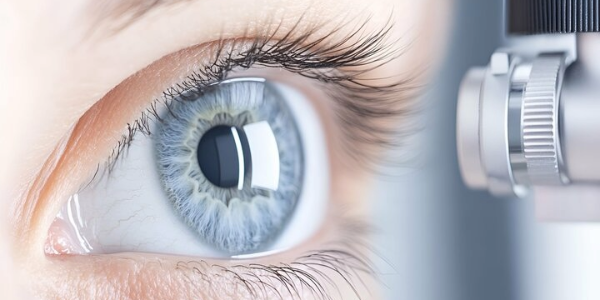Changes in vision are an inevitable part of aging, but why are some more susceptible to age-related eye diseases, and why do some people experience a more pronounced decline than others? New research from The Jackson Laboratory (JAX) indicates that genetics play a key role in how the eye ages, with different genetic backgrounds affecting retinal aging in distinct ways.
Published in Molecular Neurodegeneration, the study examined age-related changes in retinal genes and proteins in nine strains of mice, mimicking the genetic variability seen in humans. While all mice showed the expected signs of aging, the severity and nature of these changes varied considerably between the nine strains.
A More Accurate Approach to Modeling Eye Aging
Traditionally, studies of retinal aging and disease relied on a single strain of genetically identical mice, limiting researchers’ ability to understand the role of genetic variation. “The challenge in studying age-related eye diseases is that the aging process is heterogeneous,” said Gareth Howell, professor and Diana Davis Spencer Foundation Chair for Glaucoma Research at JAX, who led the research. ”What we observe about the aging process in one strain of mice may not be relevant to all mice – or humans. To overcome the limitations of previous studies, we wanted to know how genetic context influences retinal aging.”

In his work, Howell and his team used nine strains of mice with diverse genetic backgrounds that better reflect human variability and generated data on age-related genetic and molecular changes in young and old mice. Now that their dataset is publicly available, Howell and his team hope that their findings will help other scientists in their research into aging processes and vision loss – work that could also improve the use of the eye as a window to the brain to predict neurological impairment.
Gene and Protein Analyses to Predict Eye Disease
One of the study’s most important discoveries was the identification of two strains of mice that closely mimic human retinal diseases. Using eye examinations similar to those performed on humans during routine eye care appointments, the researchers found that that the Watkins-Star-Line-B (WSB) strain developed features of age-related macular degeneration and retinitis pigmentosa, a rare inherited form of blindness, while the New Zealand Obese (NZO) strain, known for its severe obesity and diabetes, developed diabetic retinopathy. Furthermore, genetic and protein analyses predicted that both strains of mice would develop common age-related eye diseases. “It was promising to see that the molecular data we generated predicted specific retinal cell abnormalities in these two strains,” said Olivia Marola, a postdoctoral fellow at JAX and co-author of the new paper. When they saw unique changes in the retinal ganglion cells of NZO at the molecular level, the researchers actually detected drastic functional changes in these cells.
These models will allow researchers to study the progression of these diseases and explore potential treatments, explained Michael MacLean, a postdoc and one of the paper’s first authors. It could also help other scientists choose which mouse models to use in their own aging-related work, or conduct further studies to identify individual genes associated with accelerated eye aging and eye diseases such as cataracts, glaucoma, macular degeneration, and diabetic retinopathy. Beyond vision research, this study may have broader implications for neurodegenerative diseases. Because the retina is an extension of the brain, understanding how it ages may provide insights into diseases such as Alzheimer’s and other forms of dementia.





